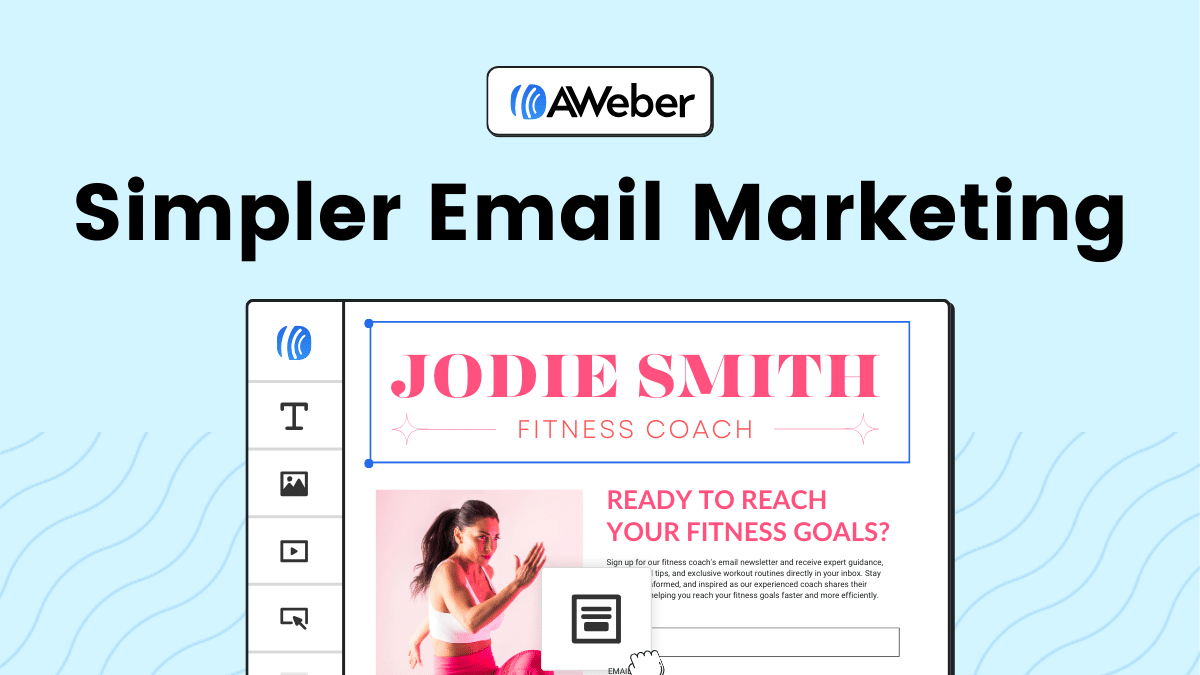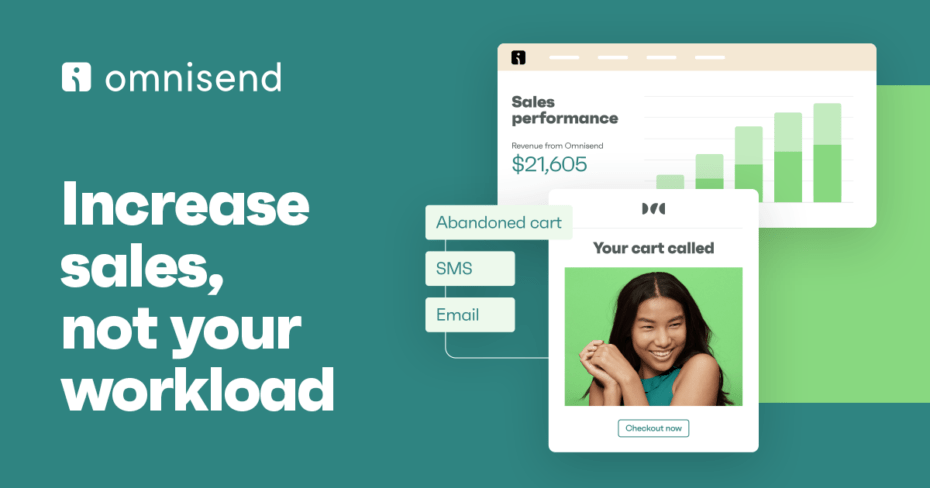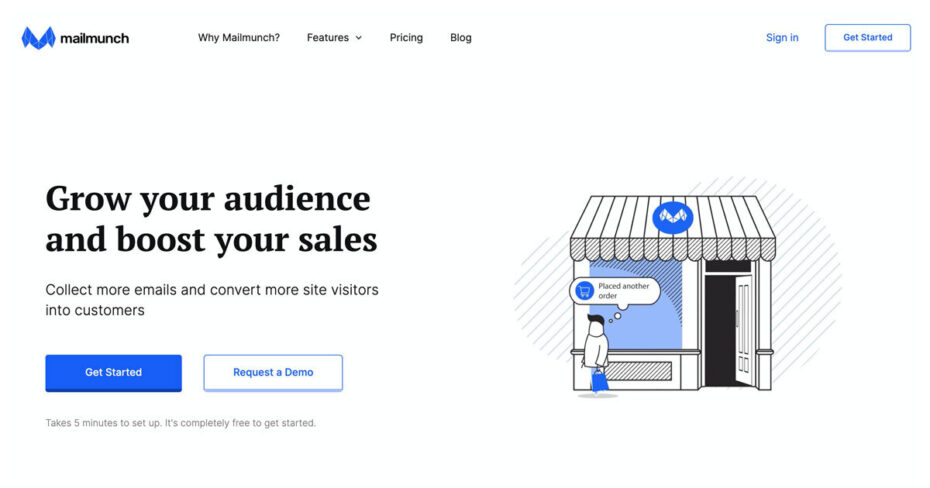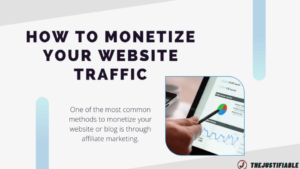Table of Contents
Are you wondering how to make money blogging effectively? Do you want to know the best strategies to monetize your blog? In this article, we’ll explore seven straightforward methods to turn your blog into a profitable venture.
1. Monetize Your Blog with Affiliate Marketing
Affiliate marketing is a powerful way to make money blogging. By partnering with brands and promoting their products, you can earn commissions for every sale made through your referral links. This method allows you to leverage your blog’s audience and turn your influence into a profitable venture.
One of the biggest advantages of affiliate marketing is its scalability. You can promote multiple products and services across different blog posts, creating multiple income streams. To maximize your earnings, it’s essential to choose high-paying affiliate programs, write authentic product reviews, and use affiliate links strategically.
Affiliate Programs Recommendations
FlexOffers
| MyLead
| ShareASale
|
Find High-Paying Affiliate Programs
Finding high-paying affiliate programs is crucial for maximizing your income. Start by researching programs that align with your blog’s niche and audience interests. Look for programs that offer generous commissions, reliable tracking, and timely payouts. Many brands have affiliate programs, so consider partnering with reputable companies in your industry.
It’s also beneficial to join affiliate networks like ShareASale, CJ Affiliate, and Rakuten Marketing. These platforms connect you with various merchants and provide tools to track your performance. Additionally, read reviews and testimonials from other affiliates to ensure the program’s credibility and profitability.
Evaluate the product quality and relevance to your audience. Promoting products you genuinely believe in will enhance your credibility and increase the likelihood of conversions. By selecting high-paying affiliate programs, you can significantly boost your blog’s revenue.
Write Authentic Product Reviews
Writing authentic product reviews is key to successful affiliate marketing. Readers trust your opinions and rely on your recommendations, so it’s important to provide honest and detailed assessments of the products you promote. Start by thoroughly testing the product and noting its features, benefits, and drawbacks.
When writing your review, use a friendly and conversational tone to engage your readers. Highlight the product’s unique selling points and how it can solve a specific problem for your audience. Include personal anecdotes and real-life examples to make your review relatable and trustworthy.
Incorporate multimedia elements like images, videos, and infographics to enhance your review. Visuals can help illustrate your points and make your content more engaging. Always disclose your affiliate relationship transparently to maintain trust with your readers.
Encourage reader interaction by inviting them to share their experiences and ask questions in the comments section. Responding to their queries and feedback can further establish your authority and foster a loyal community.
Use Affiliate Links Strategically
Using affiliate links strategically is essential for maximizing your earnings. Place your affiliate links naturally within your content, ensuring they fit seamlessly into the narrative. Avoid overloading your blog posts with links, as this can come across as spammy and reduce reader trust.
One effective strategy is to use contextual links. These are embedded within relevant text, providing readers with additional information without disrupting the flow of your content. For example, if you’re discussing a feature of a product, hyperlink a related keyword to your affiliate link.
Another approach is to create dedicated resource pages or product comparison charts. These pages can serve as valuable references for your readers and provide multiple affiliate link opportunities. Regularly update these pages to keep the information current and relevant.
Utilize call-to-action (CTA) buttons to highlight your affiliate links. CTAs can guide your readers toward making a purchase, increasing your chances of earning a commission. Ensure your CTAs are clear, compelling, and strategically placed throughout your content.
2. Utilize Display Advertising for Passive Income
Display advertising is a fantastic way to make money blogging passively. With the right strategies, you can turn your blog into a revenue-generating machine through ad placements. Display ads work well because they can be set up once and then generate income without much ongoing effort.
The key to success with display advertising is to choose the right ad networks, optimize your ad placements, and increase your blog traffic. These steps ensure you maximize your earnings while maintaining a positive user experience for your readers.
Choose the Right Ad Networks
Choosing the right ad networks is crucial to making money blogging through display ads. Start by researching popular ad networks such as Google AdSense, Popads, and Adsterra. Each network has different requirements and payment structures, so it’s important to find one that aligns with your blog’s traffic and content.
Google AdSense is a great starting point for most bloggers due to its ease of use and widespread acceptance. However, if your blog has high traffic, you might benefit from premium networks like Adsterra, which offer higher payouts but have stricter entry requirements.
Consider the types of ads each network offers. Some networks focus on contextual ads that match your content, while others may provide banner or video ads. Selecting the right type of ads ensures they blend seamlessly with your blog, enhancing the reader experience.
Review the network’s payment terms and support. Reliable payment schedules and responsive customer support are essential for a smooth experience. High-quality ad networks also provide robust analytics, helping you track performance and optimize revenue.
Optimize Ad Placements
Optimizing ad placements is essential for maximizing ad revenue without compromising user experience. Strategic placement of ads can significantly boost your income while keeping your readers engaged. Start by identifying high-visibility areas on your blog, such as above the fold, within the content, and in the sidebar.
Placing ads above the fold ensures they are seen immediately when a visitor lands on your page. This prime real estate can lead to higher click-through rates and increased revenue. However, balance is key; too many ads in this area can disrupt the reader experience.
Within-content ads, or in-article ads, are effective because they appear as part of your blog post. These ads blend with your content, making them less intrusive and more likely to be clicked. Experiment with different placements within your articles to find the optimal spots.
Sidebar ads provide additional opportunities to monetize your blog. These ads can stay visible as readers scroll, increasing their exposure. However, ensure your sidebar is not overcrowded, as this can detract from the user experience.
Use A/B testing to determine the best ad placements. This method involves testing different ad locations and measuring performance to find the most effective configuration. Regularly review your analytics to optimize ad placements for maximum revenue.
Increase Traffic to Boost Ad Revenue
Increasing your blog’s traffic is fundamental to boosting ad revenue. More visitors mean more ad impressions and clicks, leading to higher earnings. Start by focusing on search engine optimization (SEO) to attract organic traffic. Use relevant keywords, including “make money blogging,” naturally throughout your content.
Create high-quality, engaging content that resonates with your audience. Valuable content encourages readers to spend more time on your blog, increasing the chances of ad interactions. Share your posts on social media platforms to reach a broader audience and drive more traffic to your blog.
Collaborate with other bloggers and websites in your niche to build backlinks. Backlinks from reputable sites improve your blog’s search engine ranking, driving more organic traffic. Guest posting and participating in online communities are effective ways to gain backlinks.
Invest in paid advertising to boost your blog’s visibility. Platforms like Google Ads and Facebook Ads allow you to target specific audiences, driving targeted traffic to your blog. Monitor your ad campaigns closely to ensure a positive return on investment.
3. Utilize Email Marketing for Sales
Email marketing is a proven method to make money blogging. It allows you to reach your audience directly and convert subscribers into paying customers. By building an engaged email list, creating compelling email campaigns, and using email marketing tools effectively, you can significantly boost your sales.
With email marketing, you have the power to deliver targeted messages, offer exclusive deals, and build a strong relationship with your audience. This personalized approach increases the likelihood of conversions, making email marketing a vital strategy for monetizing your blog.
Email Marketing Recommendations
 Aweber
|  Omnisend
|  Mailmunch
|
Build an Engaged Email List
Building an engaged email list is the foundation of successful email marketing. Start by offering valuable content and incentives to encourage visitors to subscribe. This could include free ebooks, exclusive blog posts, or special discounts. Ensure your opt-in forms are prominent and easy to use across your blog.
Segment your email list based on interests and behaviors to deliver more personalized content. For example, if you write about various topics like health, finance, and technology, segment your subscribers according to their preferences. This allows you to send targeted emails that resonate with each segment, increasing engagement.
Regularly clean your email list to maintain its quality. Remove inactive subscribers who haven’t engaged with your emails for an extended period. This practice helps improve your open rates and ensures your messages reach the most interested readers.
Engage with your subscribers through welcome emails and follow-up sequences. These initial interactions set the tone for your relationship and can guide new subscribers to your best content. Use these opportunities to introduce yourself, share your blog’s mission, and highlight the value they will receive by staying subscribed.
Create Compelling Email Campaigns
Creating compelling email campaigns is key to converting your subscribers into customers. Start with attention-grabbing subject lines that entice recipients to open your emails. A compelling subject line is the first step in driving engagement and ensuring your message gets read.
Craft engaging email content that provides value to your readers. Focus on solving their problems, sharing insights, and offering exclusive deals. Personalize your emails by addressing subscribers by their names and referencing their interests or past interactions with your blog.
Use a conversational tone to make your emails feel personal and relatable. This approach helps build a connection with your audience and encourages them to trust your recommendations. Incorporate power words and persuasive language to inspire action, whether it’s clicking a link, making a purchase, or sharing your content.
Include clear and compelling calls-to-action (CTAs) in your emails. Your CTAs should stand out and clearly state what you want the reader to do next. Whether it’s “Shop Now,” “Read More,” or “Get Your Discount,” a strong CTA drives conversions and helps achieve your email marketing goals.
Use Email Marketing Tools Effectively
Using email marketing tools effectively can streamline your campaigns and maximize your results. Choose a reliable email marketing platform like Moosend, ConvertKit, or AWeber that offers features suited to your needs. These tools provide templates, automation options, and analytics to enhance your email marketing efforts.
Leverage automation to send timely and relevant emails. Automated sequences, such as welcome series, cart abandonment reminders, and post-purchase follow-ups, ensure you stay connected with your audience without manual intervention. Automation saves time and helps maintain consistent communication.
Analyze your email campaign performance to identify what works and what needs improvement. Pay attention to metrics like open rates, click-through rates, and conversion rates. Use this data to refine your strategies and optimize future campaigns for better results.
Experiment with A/B testing to determine the most effective elements of your emails. Test different subject lines, email designs, and CTAs to see which variations perform best. Continuous testing and optimization can significantly improve your email marketing success.
4. Create a Membership Site for Exclusive Content
Creating a membership site is a fantastic way to make money blogging. Offering exclusive content to your loyal readers can generate recurring revenue and build a strong community around your blog. With a well-structured membership site, you can provide premium content that keeps your audience engaged and coming back for more.
Membership sites allow you to share your expertise in a more intimate and valuable way. Members gain access to unique content, special offers, and personalized interactions, making them feel valued and invested in your blog. This approach not only boosts your income but also enhances your blog’s overall impact.
Develop Premium Content for Members
Developing premium content for your members is crucial to maintaining their interest and ensuring they feel they’re getting their money’s worth. Start by identifying the type of content that your audience finds most valuable and engaging. This could include in-depth guides, exclusive articles, webinars, or downloadable resources.
Create content that addresses the specific needs and interests of your members. For instance, if your blog focuses on health and wellness, consider offering exclusive workout plans, meal prep guides, or access to live Q&A sessions with experts. The goal is to provide content that cannot be found elsewhere on your blog or the internet.
Consistency is key when providing premium content. Establish a regular schedule for releasing new content so members know when to expect fresh material. This could be weekly, bi-weekly, or monthly, depending on your capacity to produce high-quality content.
Engage with your members by encouraging feedback and participation. Create a members-only forum or community where they can discuss content, share experiences, and ask questions. This interaction not only enhances the value of your membership site but also fosters a sense of belonging and loyalty among your members.
Set Up Membership Tiers
Setting up membership tiers allows you to cater to different segments of your audience and provide varying levels of value. Start with a basic tier that offers access to exclusive content at a lower price point. This tier can serve as an entry-level option for those who are new to your blog or hesitant to commit to a higher-priced membership.
Create additional tiers that offer more advanced content, personalized services, or exclusive perks. For example, a mid-level tier might include everything from the basic tier plus access to live webinars and special discounts on products. A top-tier membership could offer one-on-one coaching, personalized advice, or behind-the-scenes content.
Clearly define the benefits of each tier and communicate them effectively to your audience. Use comparison charts or detailed descriptions to highlight the differences and value propositions of each membership level. This transparency helps potential members make informed decisions about which tier best suits their needs.
Regularly review and update your membership tiers based on member feedback and engagement metrics. Adjusting the offerings and prices of each tier can help you optimize value and retain members. Flexibility and responsiveness to member needs are essential for long-term success.
Promote Membership Benefits
Promoting the benefits of your membership site is essential to attracting new members and retaining existing ones. Start by showcasing the exclusive content and perks that members receive. Use testimonials and success stories from current members to illustrate the value of your offerings.
Leverage your blog and social media platforms to highlight membership benefits. Create blog posts, videos, and social media updates that provide a glimpse of what members can expect. Tease new content releases and special events to generate excitement and anticipation.
Offer limited-time promotions or discounts to encourage sign-ups. These can be particularly effective during the launch of your membership site or during special occasions. Use clear and compelling calls-to-action to drive conversions and make it easy for readers to join.
Engage with your audience through email marketing campaigns. Send regular updates about new content, upcoming events, and special offers. Personalized and targeted emails can significantly increase your membership conversion rates and keep your members informed and engaged.
5. Earn Through Sponsored Blog Posts
Earning through sponsored blog posts is a lucrative way to make money blogging. This method involves partnering with brands to create content that promotes their products or services. Sponsored posts can provide a significant boost to your income while offering value to your readers.
To maximize your earnings from sponsored posts, it’s crucial to connect with the right brands, negotiate fair compensation, and create engaging content that resonates with your audience. These strategies will help you build successful collaborations and maintain your blog’s integrity.
Connect with Brands for Sponsored Content
Connecting with brands for sponsored content starts with identifying companies that align with your blog’s niche and audience. Research potential partners by exploring their websites, social media profiles, and existing collaborations with other bloggers. Reach out to brands that match your values and interests.
Craft a compelling pitch that highlights your blog’s strengths and audience demographics. Explain how a partnership can benefit the brand and propose content ideas that showcase their products authentically. Include your media kit, which should detail your blog’s traffic, engagement metrics, and past collaborations.
Networking with other bloggers and attending industry events can also help you connect with brands. Building relationships within your niche can lead to valuable introductions and opportunities for sponsored content. Maintain professionalism and follow up with brands to keep the conversation going.
Utilize influencer marketing platforms like AspireIQ, Influencity, and TapInfluence to find brands looking for bloggers to collaborate with. These platforms can streamline the process and connect you with companies that are actively seeking partnerships.
Negotiate Fair Compensation
Negotiating fair compensation is essential to ensure you are rewarded appropriately for your efforts. Start by researching industry standards and understanding the value you bring to the partnership. Factors such as your blog’s traffic, engagement rate, and the type of content required will influence your rates.
Prepare a rate card that outlines your pricing for different types of sponsored content, such as blog posts, social media mentions, and product reviews. This transparency can help brands understand your rates and make the negotiation process smoother.
When discussing compensation, consider both monetary payment and additional benefits like free products, affiliate commissions, or long-term partnerships. Be clear about your expectations and be open to negotiation, ensuring both parties find a mutually beneficial arrangement.
Track your sponsored content’s performance to provide brands with data on reach, engagement, and conversions. This information can justify your rates and demonstrate the value you deliver, making it easier to negotiate fair compensation in future collaborations.
Create Engaging Sponsored Posts
Creating engaging sponsored posts requires a balance between promoting the brand and providing valuable content to your readers. Start by understanding the brand’s goals and the message they want to convey. This will help you craft content that aligns with both your blog and the brand’s objectives.
Use a conversational tone to make the content relatable and engaging. Share personal experiences or stories related to the product to add authenticity and credibility. Highlight the benefits and unique features of the product, and explain how it can solve a problem or enhance your readers’ lives.
Incorporate multimedia elements such as high-quality images, videos, and infographics to make your post visually appealing. These elements can help illustrate your points and keep readers engaged. Ensure your content is well-structured, with clear headings and sections for easy readability.
Always disclose the sponsored nature of the post to maintain transparency and trust with your audience. Readers appreciate honesty, and clear disclosure helps them understand the context of your recommendations. Encourage feedback and interaction in the comments section to foster engagement and build a sense of community.
6. Sell Digital Products to Your Audience
Selling digital products is an excellent way to make money blogging while providing value to your audience. Digital products such as ebooks, online courses, and downloadable resources can generate significant income and establish you as an authority in your niche.
To successfully sell digital products, focus on developing high-quality content, offering resources that meet your audience’s needs, and promoting your products effectively. These strategies will help you build a profitable digital product line.
Develop Ebooks and Online Courses
Developing ebooks and online courses starts with identifying topics that resonate with your audience. Conduct surveys, analyze blog comments, and review social media interactions to understand your readers’ pain points and interests. Choose topics where you have expertise and can provide valuable insights.
Create detailed outlines for your ebooks and courses to ensure comprehensive coverage of the subject matter. Break down the content into manageable sections and include actionable tips, case studies, and real-life examples. High-quality visuals, such as diagrams and charts, can enhance the learning experience.
Invest in professional design and editing services to ensure your digital products look polished and are free of errors. A well-designed ebook or course can significantly impact your credibility and attract more buyers. Consider offering a free sample or preview to entice potential customers to make a purchase.
Market your ebooks and courses through your blog, social media, and email newsletters. Highlight the benefits and value your products offer, and use testimonials from satisfied customers to build trust. Regularly update your digital products to keep the content relevant and valuable.
Offer Downloadable Resources
Offering downloadable resources like templates, checklists, and printables can provide quick wins for your audience and generate additional income. These resources should be practical and immediately useful, addressing specific needs or challenges your readers face.
Identify the types of resources that would be most beneficial to your audience. For example, if you run a finance blog, you could offer budgeting templates or investment trackers. Create high-quality, visually appealing resources that are easy to use and customize.
Set up a simple sales funnel on your blog to promote your downloadable resources. Use landing pages, pop-ups, and lead magnets to capture email addresses and drive sales. Offer a mix of free and paid resources to attract a wider audience and convert free users into paying customers.
Promote your downloadable resources through social media and email campaigns. Highlight their practicality and how they can save time or improve productivity. Providing regular updates and new releases can keep your audience engaged and encourage repeat purchases.
Promote Your Products Effectively
Promoting your digital products effectively is essential for driving sales and maximizing revenue. Start by creating compelling product pages that highlight the features, benefits, and unique selling points of your products. Use high-quality images, detailed descriptions, and customer testimonials to build credibility and trust.
Leverage your blog and social media platforms to announce new product launches, share updates, and provide special offers. Use engaging content such as blog posts, videos, and infographics to showcase your products and their benefits. Create urgency with limited-time discounts or exclusive deals to encourage immediate purchases.
Build an email marketing campaign to promote your products to your subscribers. Segment your email list based on interests and past purchases to send targeted messages that resonate with each group. Use persuasive subject lines, compelling copy, and clear calls-to-action to drive conversions.
Collaborate with other bloggers and influencers in your niche to expand your reach and tap into new audiences. Guest posts, joint webinars, and social media shoutouts can introduce your products to potential customers who might not have found them otherwise. Monitor your promotions’ performance and adjust your strategies based on data and feedback.
7. Offer Freelance Writing Services
Offering freelance writing services is a great way to make money blogging. As a blogger, you already have the skills and expertise to create engaging content, so why not leverage that to provide value to others? By advertising your services, creating a portfolio, and networking effectively, you can attract clients and generate a steady income.
Freelance writing allows you to diversify your income and gain exposure to different industries. It also helps you hone your writing skills and build a robust professional network. With the right approach, you can establish yourself as a sought-after freelance writer.
Advertise Your Services on Your Blog
Advertising your freelance writing services on your blog is a straightforward way to attract potential clients. Start by creating a dedicated page that outlines your services, expertise, and the benefits of working with you. Make sure to highlight your primary keyword, “freelance writing services,” naturally throughout the content to improve SEO.
Use compelling headlines and power words to grab attention and entice readers to learn more about your services. Include a clear call-to-action, encouraging visitors to contact you for more information or to request a quote. Providing a contact form or an email address makes it easy for potential clients to reach out.
Showcase testimonials and case studies from past clients to build credibility and trust. Positive feedback and success stories can significantly influence a potential client’s decision to hire you. Make sure to update this page regularly with new testimonials and examples of your work.
Promote your freelance writing services through blog posts, social media, and email newsletters. Share tips and insights related to writing, content creation, and your personal experiences as a freelance writer. This approach positions you as an expert in your field and keeps your audience engaged with valuable content.
Create a Portfolio to Showcase Your Work
Creating a portfolio is essential to demonstrate your writing abilities and attract clients. Start by selecting your best work that highlights your versatility and expertise. Include a mix of blog posts, articles, case studies, and other content types that showcase your skills in different niches.
Organize your portfolio in a user-friendly manner, making it easy for potential clients to navigate. Use clear headings and descriptions for each piece, explaining the context and the results achieved. Highlight the primary keyword, “freelance writing services,” in the descriptions to enhance SEO.
Incorporate visuals such as screenshots, graphics, or PDFs to make your portfolio more engaging. Visual elements can help illustrate your points and make your portfolio stand out. Ensure that the design of your portfolio aligns with your personal brand and is visually appealing.
Include a section for client testimonials and endorsements. Positive feedback from satisfied clients adds credibility to your portfolio and reassures potential clients of your capabilities. Regularly update your portfolio with new work and achievements to keep it current and relevant.
Network to Find Writing Opportunities
Networking is a powerful strategy to find writing opportunities and grow your freelance writing business. Start by joining online communities and forums related to writing and content creation. Participate in discussions, share your insights, and offer advice to establish yourself as a knowledgeable and helpful member.
Attend industry events, webinars, and conferences to meet potential clients and other writers. Networking events provide valuable opportunities to build relationships, learn from others, and discover new writing opportunities. Bring business cards and be prepared to talk about your freelance writing services and experience.
Connect with other bloggers and writers in your niche to explore collaboration opportunities. Guest posting on each other’s blogs, co-authoring articles, or hosting joint webinars can help you reach a broader audience and attract new clients. Building a network of supportive peers can also provide referrals and recommendations.
Leverage social media platforms like LinkedIn, Twitter, and Facebook to promote your services and connect with potential clients. Share your portfolio, testimonials, and blog posts to showcase your expertise. Engage with your followers, join relevant groups, and participate in discussions to increase your visibility and credibility.
FAQ for “Discover 7 Easy Ways to Make Money Blogging”
How can I start making money with my blog?
To start making money with your blog, begin by choosing a niche you are passionate about and that has a potential audience. Create high-quality, valuable content that engages your readers. Utilize strategies such as affiliate marketing, display advertising, sponsored posts, selling digital products, offering freelance services, and building a membership site to monetize your blog.
What is affiliate marketing and how does it work?
Affiliate marketing involves partnering with brands and promoting their products on your blog. You earn a commission for every sale made through your referral links. To succeed, choose high-paying affiliate programs relevant to your niche, write authentic product reviews, and strategically place affiliate links within your content.
Which ad networks are best for display advertising on my blog?
How can I increase traffic to my blog to boost ad revenue?
To increase blog traffic, focus on search engine optimization (SEO) by using relevant keywords naturally throughout your content. Create high-quality, engaging posts that resonate with your audience, and share your content on social media platforms. Collaborate with other bloggers for backlinks, and consider investing in paid advertising to reach a broader audience.
What are the benefits of building an email list for my blog?
Building an email list allows you to reach your audience directly and convert subscribers into paying customers. By offering valuable content and incentives, you can grow an engaged email list. Email marketing campaigns can promote your products, drive traffic to your blog, and build a strong relationship with your readers, increasing the likelihood of conversions.
How do I create compelling sponsored blog posts?
To create compelling sponsored blog posts, understand the brand’s goals and the message they want to convey. Use a conversational tone, share personal experiences, and highlight the product’s benefits. Incorporate high-quality images and multimedia elements, and always disclose the sponsored nature of the post to maintain transparency and trust with your audience.
What types of digital products can I sell on my blog?
You can sell a variety of digital products on your blog, including ebooks, online courses, templates, checklists, and printables. Choose topics that resonate with your audience and address their specific needs. Develop high-quality content, market your products effectively through your blog and social media, and use testimonials to build credibility and trust with potential buyers.











